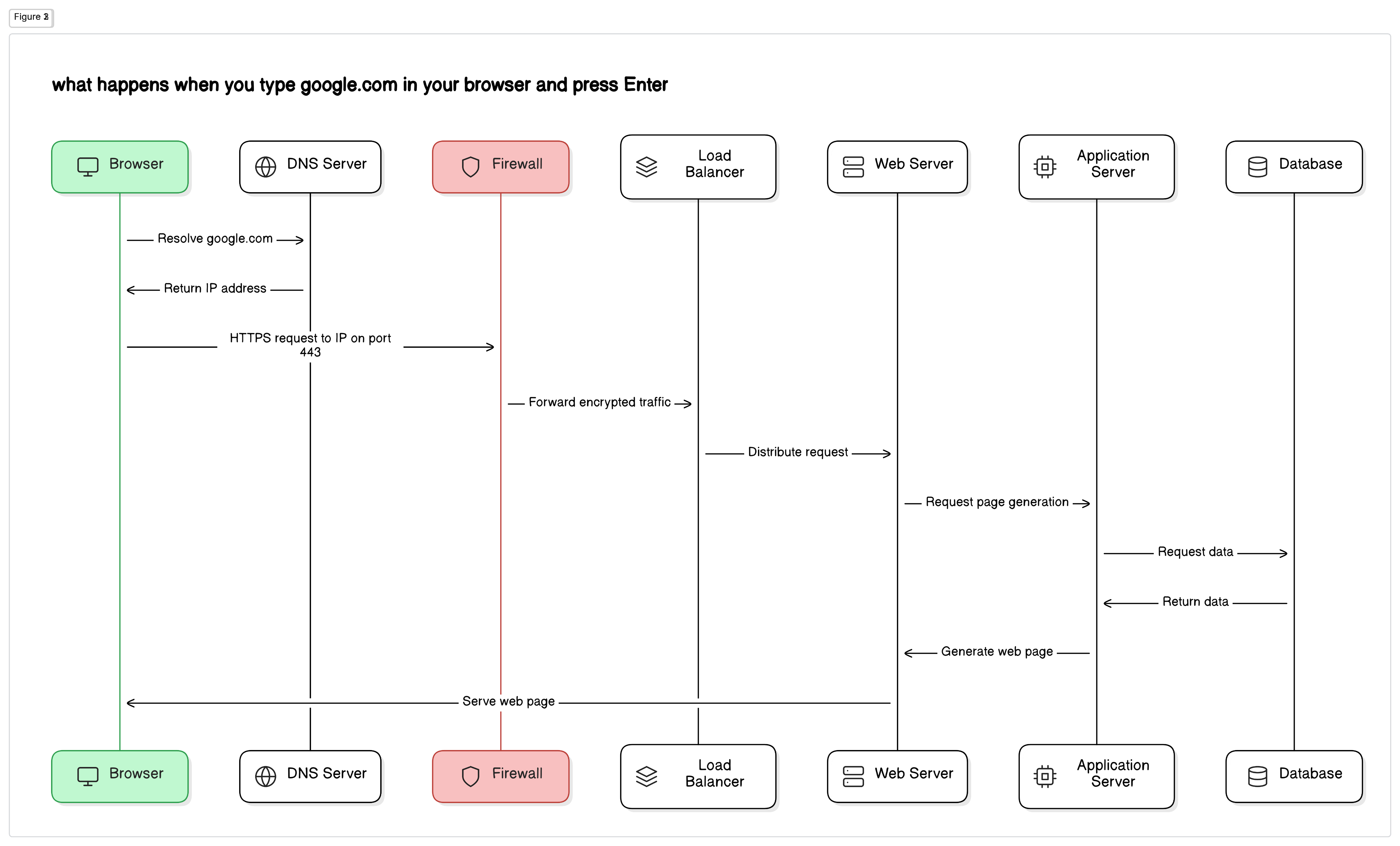The Web Unveiled: Traversing https://www.google.com"
 Oladele David Temidayo
Oladele David Temidayo
Navigating through millions of web pages on the internet is an exciting experience. Have you ever wondered what goes on behind the scenes? In what way does the browser determine which page to display? Welcome aboard to our virtual journey exploring the amazing principles of accessing the web using "https://www.google.com" as a case study. Come along as we dissect the complex network of interrelated parts that makes this popular homepage visible on our screens.

Mapping the Digital Landscape: DNS Request
The first step in our journey is a simple DNS request, which is the digital equivalent of looking up our destination on a map. When you type "https://www.google.com" into your browser and hit Enter, your browser sends a request to a DNS server, asking for the IP address associated with Google's domain name. Consider it as approaching a friend before you visit them by requesting their physical address. The DNS server looks up the matching IP address in its database. It is typically run by your Internet Service Provider (ISP) or another third-party resolver. Once found, this IP address is returned to your browser, enabling it to proceed to the next step.
TCP/IP, the Data Highway.
This is where it becomes intriguing. We navigate the TCP/IP protocol's digital highways using the coordinates we have acquired. TCP (Transmission Control Protocol) ensures that data sent and received between your browser and Google's servers is delivered reliably. It divides the data into packets and re-transmits any that are lost, making sure the packets arrive in the right order. Meanwhile, IP (Internet Protocol) addresses and routes these packets, directing them to their intended destination across a vast network of interconnected devices. TCP and IP form the backbone of internet communication, safely guiding our requests to their destinations.
Securing the Path: HTTPS/SSL
Recall the time you went to your friend's house and the security personnel stopped you at the gate to ask you to prove who you were. That is essentially how HTTPS and SSL function. We initiate a secure handshake with HTTPS/SSL as we get closer to Google's domain gates, creating an encrypted channel for our communication. The data that is exchanged between your browser and Google's servers is encrypted via HTTPS (Hypertext Transfer Protocol Secure), which guards against unauthorized access and manipulation. This encryption depends on TLS (Transport Layer Security) or SSL (Secure Sockets Layer), which use cryptographic algorithms to guarantee the data's integrity and confidentiality. As part of the handshake, digital certificates are exchanged, the server's legitimacy is confirmed, and mutual trust is built. Sounds interesting, right?
Balancing the Load: Load-Balancer
Upon reaching Google's digital doorstep, we meet the load balancer, the master conductor orchestrating the flow of traffic. Load balancers distribute incoming requests across multiple servers, ensuring optimal performance and resource utilization. Imagine arriving at a bustling marketplace with multiple checkout counters. The load balancer directs your request to the least-busy server, preventing any single server from becoming overwhelmed. This not only improves response times but also enhances reliability and scalability, as additional servers can be added or removed dynamically to handle fluctuations in traffic.
Heart of the Operation: Web Server and Application Server
As we enter the busy domain of Google, we come across the application server and web server. The web server processes our request initially, such as Google's infrastructure, which runs on servers like Apache or Nginx. It routes dynamic requests to the relevant application server and serves static content such as HTML, CSS, and JavaScript files. The logic needed to produce dynamic content is carried out by the application server, which may be running frameworks like Python's Django or Java's Servlets. It may also be using Google's proprietary systems. This could entail making use of databases, handling user input, or carrying out intricate computations. These servers cooperate flawlessly to provide the web pages and applications that we use on a daily basis in response to our requests.
Unveiling the Data Vault - Database
Tucked away in Google's digital vaults is the database, the knowledge base. It gives us the information required to complete our request, whether it is news articles, search results, or some other hidden gem. Google employs sophisticated database systems like Bigtable, Spanner, and MySQL to store and manage vast amounts of structured and unstructured data. When we search for information or interact with Google's services, the application server queries these databases to retrieve relevant data. It's like accessing the library of Alexandria, with an unfathomable wealth of information at our fingertips.
To summarize, the path to "https://www.google.com" is not a sequence of discrete stages, but rather a seamless journey via the interconnected web of technology. From the first DNS request to the final data delivery, each component depends on the others to provide a seamless and unified web experience. So, the next time you go out on this digital adventure, take a moment to admire the complicated dance of technology that puts the world of the internet to your fingertips.
#ALX_SE #ALX #ALXNigeria #Google
Subscribe to my newsletter
Read articles from Oladele David Temidayo directly inside your inbox. Subscribe to the newsletter, and don't miss out.
Written by

Oladele David Temidayo
Oladele David Temidayo
I am Oladele David a software developer and tech enthusiast based in Lagos Nigeria. I'm passionate about sharing and acquiring knowledge, documentation, Open-source projects and communities.